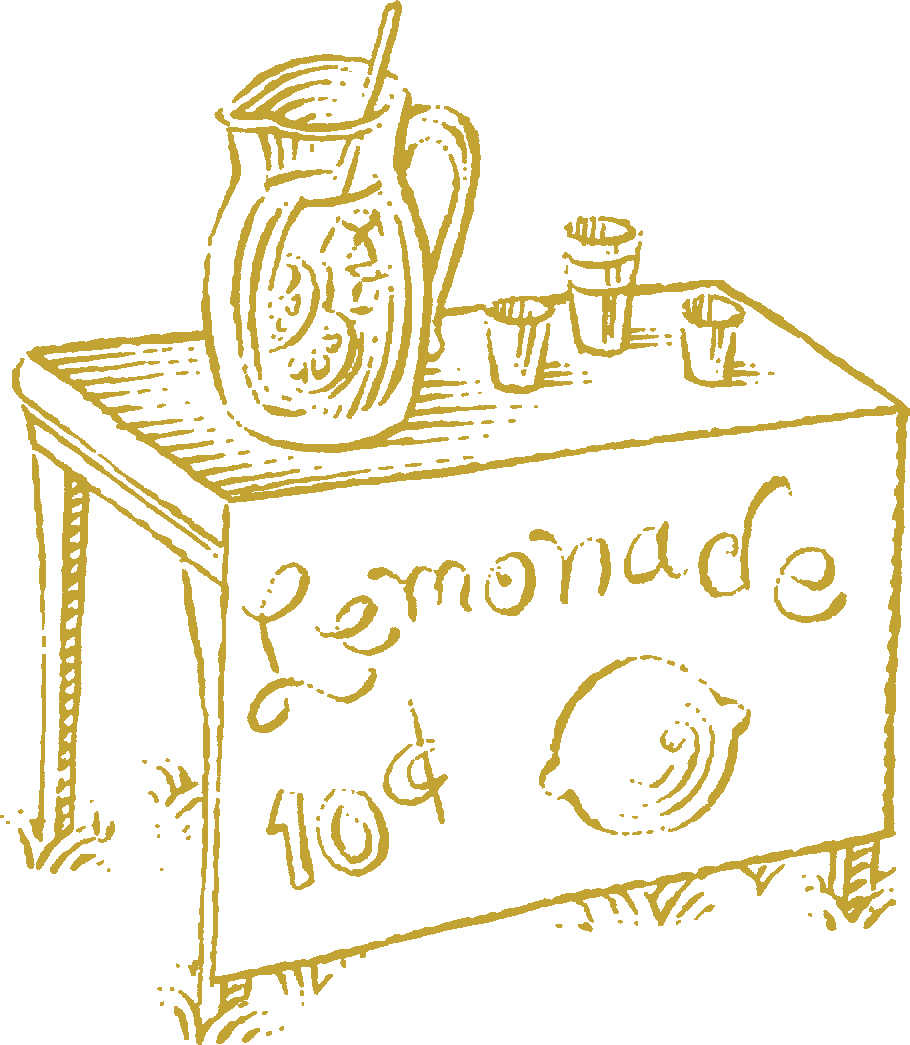Copyright 1999 by Helene Siegel and Karen Gillingham.
Illustrations copyright 1999 by Carolyn Vibbert.
All rights reserved. No part of this book may be reproduced or transmitted in any form or by any means, electronic or mechanical, including photocopying, recording, or by any information storage and retrieval system without permission in writing.
Siegel, Helene.
p. cm.
ISBN0-89087-887-0 (alk. paper)
1. Cookery (Lemons) I. Gillingham, Karen. II. Title.
P.O. Box 7123
INTRODUCTION
I t's easy to take lemons for granted. They are inexpensive, available all year round, and they keep well.
In addition, the lemon is a fruit that doesn't behave like a fruit. Unlike a good apple, a lemon can't be eaten out of hand or packed in a lunch box for a healthy treat. Nobody pines for a perfect lemon. And yet, just try living without them.
To the good cook, they are as essential as salt and pepper. Their juice adds vim and vigor to raw shellfish, smoked fish, and salads. Heavily spiced or rich stews and soups are brought into balance by a final squirt of lemon. Almost all fruits taste better seasoned with lemon juice. Tea, coffee, and mixed drinks come to life with a twist of lemon. And the lemon wedge is the low-fat cook's universal response to pallid chicken breasts, fish fillets, and steamed veggies.
Since nobody needs a recipe to add a squirt of lemon at the end of preparing a dish, we made it our job to assemble a group of great recipes with lemon as a featured flavor. From classic lemon bars, lemon poppy seed muffins, and marmalade to lemon pepper game hens, raw artichoke salad, and pasta with lemon cream sauce, the sour taste of lemon is integral to each dish.
Nothing says sunshine in the kitchen like a lemon. Its color and fragrance lift our spirits before we even taste it. (Legend says that the taste memory of lemon is so strong that the sight of someone sucking a lemon is enough to cause a pucker in those watching.) Household cleansers are often lemon-scented because lemons conjure freshness in ways an orange or lime never could.
So if life must mean taking the bitter with the sweet, we promise not to complain. As long as we've got lemons.
How to Zest a Lemon
The thin yellow membrane covering the lemon is the zest. It contains the fragrant oils that deliver the most intense lemon flavor. Unlike the flavor of juice, which gets cooked away with heat, the flavor of zest lingers. Wash lemons well before zesting, and if a recipe calls for both zest and juice, always zest first. Once the zest is removed, store lemons in the refrigerator for later use.
The quickest way to remove zest is to rub the lemon against a grater. If you need longer threads, use a special zester made to obtain them. A shortcut for baking recipes in which zest and sugar are both called for is to remove the zest in pieces with a vegetable peeler or paring knife. Place in food processor along with sugar, and process until fine. Add to recipe when sugar is called for.
TANGY SOUPS, SALADS, AND STARTERS
ARTICHOKE FENNEL SALAD
Look for small, delicate baby artichokes in the spring and summer in farmer's markets and well-stocked produce sections. Once baby artichokes are trimmed, the whole choke may be eaten.
juice of 1 lemon for soaking
20 baby artichokes
1 medium fennel bulb, trimmed
3 tablespoons lemon juice
6 tablespoons olive oil
2 tablespoons chopped fresh Italian parsley
salt and freshly ground pepper
4-ounce Parmesan cheese wedge
Have ready a large bowl of cold water mixed with the juice of one lemon. Trim artichoke stems and remove outer leaves until remaining inner leaves are pale and thin. Trim off top inch. With a sharp knife, cut each into 8 or 10 tiny wedges. Soak wedges in lemon water.
Cut fennel bulb in half lengthwise, and then thinly slice across width. Transfer to mixing bowl. Strain artichokes and add to fennel.
In another small bowl, whisk together lemon juice, olive oil, parsley, salt, and pepper. Pour over salad and toss well. Chill until serving time.
To serve, mound the salad on six serving plates. Thinly slice the Parmesan (shave with a cheese slicer if possible) and top each salad with Parmesan shavings. Serve cold.
S ERVES 6
When life gives you lemons, make lemonade.
Anonymous
SOPA DE LIMN
This tart chicken soup is typical of the Yucatan region of southern Mexico.
2 tomatoes
1 small onion, with skin
1 serrano chile
3 garlic cloves, with skins
1 tablespoon vegetable oil
1 teaspoon ground cumin
1 quart chicken stock
1 cinnamon stick
1 lemon, thinly sliced
fried tortilla strips, avocado strips, minced onion, chopped cilantro, lemon wedges for garnish
Preheat the broiler. Place the tomatoes, onion, chile, and garlic on foil-lined tray. Place under broiler and cook, turning frequently, until charred all over. Let cool.
Remove skins of the tomatoes, onion, chile, and garlic. Remove chile seeds, if desired. Place all in blender, and pure until smooth.
Heat the oil in a large, heavy pot over medium-high heat. Pour in pure and cumin, and let bubble about 5 minutes. Pour in chicken stock and cinnamon stick. Bring to a boil, reduce to a simmer, and cook 30 minutes. Skim and discard foam and cinnamon stick. Add lemon slices and gently cook 10 minutes longer. Ladle into bowls and serve with garnishes to add at the table.












